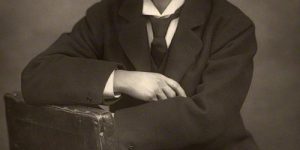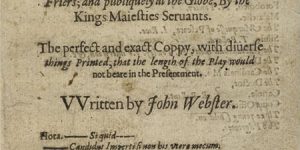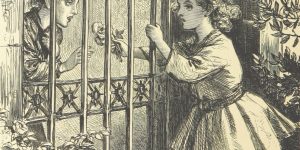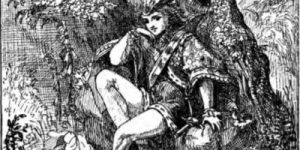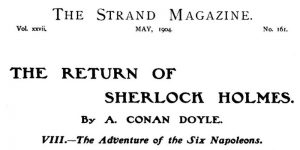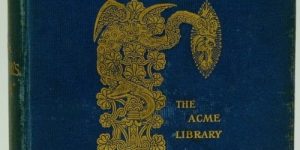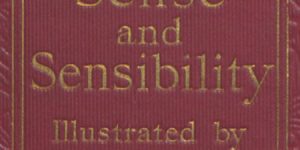The Great Boer War by Arthur Conan Doyle
The Great Boer War Preface To The Final Edition
The Great Boer War Chapter I. The Boer Nations
The Great Boer War Chapter II. The Cause Of Quarrel
The Great Boer War Chapter III. The Negotiations
The Great Boer War Chapter IV. The Eve Of War
The Great Boer War Chapter V. Talana Hill
The Great Boer War Chapter VI. Elandslaagte And Rietfontein
The Great Boer War Chapter VII. The Battle Of Ladysmith
The Great Boer War Chapter VIII. Lord Methuen’s Advance
The Great Boer War Chapter IX. Battle Of Magersfontein
The Great Boer War Chapter X. The Battle Of Stormberg
The Great Boer War Chapter XI. Battle Of Colenso
The Great Boer War Chapter XII. The Dark Hour
The Great Boer War Chapter XIII. The Siege Of Ladysmith
The Great Boer War Chapter XIV. The Colesberg Operations
The Great Boer War Chapter XV. Spion Kop
The Great Boer War Chapter XVI. Vaalkranz
The Great Boer War Chapter XVII. Buller’s Final Advance
The Great Boer War Chapter XVIII. The Siege And Relief Of Kimberley
The Great Boer War Chapter XIX. Paardeberg
The Great Boer War Chapter XX. Roberts’s Advance On Bloemfontein
The Great Boer War Chapter XXI. Strategic Effects Of Lord Roberts’s March
The Great Boer War Chapter XXII. The Halt At Bloemfontein
The Great Boer War Chapter XXIII. The Clearing Of The South-East
The Great Boer War Chapter XXIV. The Siege Of Mafeking
The Great Boer War Chapter XXV. The March On Pretoria
The Great Boer War Chapter XXVI. Diamond Hill—Rundle’s Operations
The Great Boer War Chapter XXVII. The Lines Of Communication
The Great Boer War Chapter XXVIII. The Halt At Pretoria
The Great Boer War Chapter XXIX. The Advance To Komatipoort
The Great Boer War Chapter XXX. The Campaign Of De Wet
The Great Boer War Chapter XXXI. The Guerilla Warfare In The Transvaal: Nooitgedacht
The Great Boer War Chapter XXXII. The Second Invasion Of Cape Colony
The Great Boer War Chapter XXXIII. The Northern Operations From January To April, 1901
The Great Boer War Chapter XXXIV. The Winter Campaign (April To September, 1901)
The Great Boer War Chapter XXXV. The Guerilla Operations In Cape Colony
The Great Boer War Chapter XXXVI. The Spring Campaign (September To December, 1901)
The Great Boer War Chapter XXXVII. The Campaign Of January To April, 1902
The Great Boer War Chapter XXXVIII. De La Rey’s Campaign Of 1902
The Great Boer War Chapter XXXIX. The End
The Great Boer War Chapter XXVI. Diamond Hill—Rundle’s Operations
The military situation at the time of the occupation of Pretoria was roughly as follows. Lord Roberts with some thirty thousand men was in possession of the capital, but had left his long line of communications very imperfectly guarded behind him. On the flank of this line of communications, in the eastern and north-eastern corner of the Free State, was an energetic force of unconquered Freestaters who had rallied round President Steyn. They were some eight or ten thousand in number, well horsed, with a fair number of guns, under the able leadership of De Wet, Prinsloo, and Olivier. Above all, they had a splendid position, mountainous and broken, from which, as from a fortress, they could make excursions to the south or west. This army included the commandos of Ficksburg, Senekal, and Harrismith, with all the broken and desperate men from other districts who had left their farms and fled to the mountains. It was held in check as a united force by Rundle’s Division and the Colonial Division on the south, while Colvile, and afterwards Methuen, endeavoured to pen them in on the west. The task was a hard one, however, and though Rundle succeeded in holding his line intact, it appeared to be impossible in that wide country to coop up altogether an enemy so mobile. A strange game of hide-and-seek ensued, in which De Wet, who led the Boer raids, was able again and again to strike our line of rails and to get back without serious loss. The story of these instructive and humiliating episodes will be told in their order. The energy and skill of the guerilla chief challenge our admiration, and the score of his successes would be amusing were it not that the points of the game are marked by the lives of British soldiers.
General Buller had spent the latter half of May in making his way from Ladysmith to Laing’s Nek, and the beginning of June found him with twenty thousand men in front of that difficult position. Some talk of a surrender had arisen, and Christian Botha, who commanded the Boers, succeeded in gaining several days’ armistice, which ended in nothing. The Transvaal forces at this point were not more than a few thousand in number, but their position was so formidable that it was a serious task to turn them out. Van Wyk’s Hill, however, had been left unguarded, and as its possession would give the British the command of Botha’s Pass, its unopposed capture by the South African Light Horse was an event of great importance. With guns upon this eminence the infantry were able, on June 8th, to attack and to carry with little loss the rest of the high ground, and so to get the Pass into their complete possession. Botha fired the grass behind him, and withdrew sullenly to the north. On the 9th and 10th the convoys were passed over the Pass, and on the 11th the main body of the army followed them.
The operations were now being conducted in that extremely acute angle of Natal which runs up between the Transvaal and the Orange Free State. In crossing Botha’s Pass the army had really entered what was now the Orange River Colony. But it was only for a very short time, as the object of the movement was to turn the Laing’s Nek position, and then come back into the Transvaal through Alleman’s Pass. The gallant South African Light Horse led the way, and fought hard at one point to clear a path for the army, losing six killed and eight wounded in a sharp skirmish. On the morning of the 12th the flanking movement was far advanced, and it only remained for the army to force Alleman’s Nek, which would place it to the rear of Laing’s Nek, and close to the Transvaal town of Volksrust.
Had the Boers been the men of Colenso and of Spion Kop, this storming of Alleman’s Nek would have been a bloody business. The position was strong, the cover was slight, and there was no way round. But the infantry came on with the old dash without the old stubborn resolution being opposed to them. The guns prepared the way, and then the Dorsets, the Dublins, the Middlesex, the Queen’s, and the East Surrey did the rest. The door was open and the Transvaal lay before us. The next day Volksrust was in our hands.
The whole series of operations were excellently conceived and carried out. Putting Colenso on one side, it cannot be denied that General Buller showed considerable power of manoeuvring large bodies of troops. The withdrawal of the compromised army after Spion Kop, the change of the line of attack at Pieter’s Hill, and the flanking marches in this campaign of Northern Natal, were all very workmanlike achievements. In this case a position which the Boers had been preparing for months, scored with trenches and topped by heavy artillery, had been rendered untenable by a clever flank movement, the total casualties in the whole affair being less than two hundred killed and wounded. Natal was cleared of the invader, Buller’s foot was on the high plateau of the Transvaal, and Roberts could count on twenty thousand good men coming up to him from the south-east. More important than all, the Natal railway was being brought up, and soon the central British Army would depend upon Durban instead of Cape Town for its supplies—a saving of nearly two-thirds of the distance. The fugitive Boers made northwards in the Middelburg direction, while Buller advanced to Standerton, which town he continued to occupy until Lord Roberts could send a force down through Heidelberg to join hands with him. Such was the position of the Natal Field Force at the end of June. From the west and the south-west British forces were also converging upon the capital. The indomitable Baden-Powell sought for rest and change of scene after his prolonged trial by harrying the Boers out of Zeerust and Rustenburg. The forces of Hunter and of Mahon converged upon Potchefstroom, from which, after settling that district, they could be conveyed by rail to Krugersdorp and Johannesburg.
Before briefly recounting the series of events which took place upon the line of communications, the narrative must return to Lord Roberts at Pretoria, and describe the operations which followed his occupation of that city. In leaving the undefeated forces of the Free State behind him, the British General had unquestionably run a grave risk, and was well aware that his railway communication was in danger of being cut. By the rapidity of his movements he succeeded in gaining the enemy’s capital before that which he had foreseen came to pass; but if Botha had held him at Pretoria while De Wet struck at him behind, the situation would have been a serious one. Having once attained his main object, Roberts could receive with equanimity the expected news that De Wet with a mobile force of less than two thousand men had, on June 7th, cut the line at Roodeval to the north of Kroonstad. Both rail and telegraph were destroyed, and for a few days the army was isolated. Fortunately there were enough supplies to go on with, and immediate steps were taken to drive away the intruder, though, like a mosquito, he was brushed from one place only to settle upon another.
Leaving others to restore his broken communications, Lord Roberts turned his attention once more to Botha, who still retained ten or fifteen thousand men under his command. The President had fled from Pretoria with a large sum of money, estimated at over two millions sterling, and was known to be living in a saloon railway carriage, which had been transformed into a seat of government even more mobile than that of President Steyn. From Waterval-Boven, a point beyond Middelburg, he was in a position either to continue his journey to Delagoa Bay, and so escape out of the country, or to travel north into that wild Lydenburg country which had always been proclaimed as the last ditch of the defence. Here he remained with his gold-bags waiting the turn of events.
Botha and his stalwarts had not gone far from the capital. Fifteen miles out to the east the railway line runs through a gap in the hills called Pienaars Poort, and here was such a position as the Boer loves to hold. It was very strong in front, and it had widely spread formidable flanking hills to hamper those turning movements which had so often been fatal to the Boer generals. Behind was the uncut railway line along which the guns could in case of need be removed. The whole position was over fifteen miles from wing to wing, and it was well known to the Boer general that Lord Roberts had no longer that preponderance of force which would enable him to execute wide turning movements, as he had done in his advance from the south. His army had decreased seriously in numbers. The mounted men, the most essential branch of all, were so ill horsed that brigades were not larger than regiments. One brigade of infantry (the 14th) had been left to garrison Johannesburg, and another (the 18th) had been chosen for special duty in Pretoria. Smith-Dorrien’s Brigade had been detached for duty upon the line of communications. With all these deductions and the wastage caused by wounds and disease, the force was in no state to assume a vigorous offensive. So hard pressed were they for men that the three thousand released prisoners from Waterval were hurriedly armed with Boer weapons and sent down the line to help to guard the more vital points.
Had Botha withdrawn to a safe distance, Lord Roberts would certainly have halted, as he had done at Bloemfontein, and waited for remounts and reinforcements. But the war could not be allowed to languish when an active enemy lay only fifteen miles off, within striking distance of two cities and of the line of rail. Taking all the troops that he could muster, the British General moved out once more on Monday, June 11th, to drive Botha from his position. He had with him Pole-Carew’s 11th Division, which numbered about six thousand men with twenty guns, Ian Hamilton’s force, which included one infantry brigade (Bruce Hamilton’s), one cavalry brigade, and a corps of mounted infantry, say, six thousand in all, with thirty guns. There remained French’s Cavalry Division, with Hutton’s Mounted Infantry, which could not have exceeded two thousand sabres and rifles. The total force was, therefore, not more than sixteen or seventeen thousand men, with about seventy guns. Their task was to carry a carefully prepared position held by at least ten thousand burghers with a strong artillery. Had the Boer of June been the Boer of December, the odds would have been against the British.
There had been some negotiations for peace between Lord Roberts and Botha, but the news of De Wet’s success from the south had hardened the Boer general’s heart, and on June 9th the cavalry had their orders to advance. Hamilton was to work round the left wing of the Boers, and French round their right, while the infantry came up in the centre. So wide was the scene of action that the attack and the resistance in each flank and in the centre constituted, on June 11th, three separate actions. Of these the latter was of least importance, as it merely entailed the advance of the infantry to a spot whence they could take advantage of the success of the flanking forces when they had made their presence felt. The centre did not on this as on several other occasions in the campaign make the mistake of advancing before the way had been prepared for it.
French with his attenuated force found so vigorous a resistance on Monday and Tuesday that he was hard put to it to hold his own. Fortunately he had with him three excellent Horse Artillery batteries, G, O, and T, who worked until, at the end of the engagement, they had only twenty rounds in their limbers. The country was an impossible one for cavalry, and the troopers fought dismounted, with intervals of twenty or thirty paces between the men. Exposed all day to rifle and shell fire, unable to advance and unwilling to retreat, it was only owing to their open formation that they escaped with about thirty casualties. With Boers on his front, his flank, and even on his rear, French held grimly on, realising that a retreat upon his part would mean a greater pressure at all other points of the British advance. At night his weary men slept upon the ground which they had held. All Monday and all Tuesday French kept his grip at Kameelsdrift, stolidly indifferent to the attempt of the enemy to cut his line of communications. On Wednesday, Hamilton, upon the other flank, had gained the upper hand, and the pressure was relaxed. French then pushed forward, but the horses were so utterly beaten that no effective pursuit was possible.
During the two days that French had been held up by the Boer right wing Hamilton had also been seriously engaged upon the left—so seriously that at one time the action appeared to have gone against him. The fight presented some distinctive features, which made it welcome to soldiers who were weary of the invisible man with his smokeless gun upon the eternal kopje. It is true that man, gun, and kopje were all present upon this occasion, but in the endeavours to drive him off some new developments took place, which formed for one brisk hour a reversion to picturesque warfare. Perceiving a gap in the enemy’s line, Hamilton pushed up the famous Q battery—the guns which had plucked glory out of disaster at Sanna’s Post. For the second time in one campaign they were exposed and in imminent danger of capture. A body of mounted Boers with great dash and hardihood galloped down within close range and opened fire. Instantly the 12th Lancers were let loose upon them. How they must have longed for their big-boned long-striding English troop horses as they strove to raise a gallop out of their spiritless overworked Argentines! For once, however, the lance meant more than five pounds dead weight and an encumbrance to the rider. The guns were saved, the Boers fled, and a dozen were left upon the ground. But a cavalry charge has to end in a re-formation, and that is the instant of danger if any unbroken enemy remains within range. Now a sleet of bullets hissed through their ranks as they retired, and the gallant Lord Airlie, as modest and brave a soldier as ever drew sword, was struck through the heart. ‘Pray moderate your language!’ was his last characteristic remark, made to a battle-drunken sergeant. Two officers, seventeen men, and thirty horses went down with their Colonel, the great majority only slightly injured. In the meantime the increasing pressure upon his right caused Broadwood to order a second charge, of the Life Guards this time, to drive off the assailants. The appearance rather than the swords of the Guards prevailed, and cavalry as cavalry had vindicated their existence more than they had ever done during the campaign. The guns were saved, the flank attack was rolled back, but one other danger had still to be met, for the Heidelberg commando—a corps d’elite of the Boers—had made its way outside Hamilton’s flank and threatened to get past him. With cool judgment the British General detached a battalion and a section of a battery, which pushed the Boers back into a less menacing position. The rest of Bruce Hamilton’s Brigade were ordered to advance upon the hills in front, and, aided by a heavy artillery fire, they had succeeded, before the closing in of the winter night, in getting possession of this first line of the enemy’s defences. Night fell upon an undecided fight, which, after swaying this way and that, had finally inclined to the side of the British. The Sussex and the City Imperial Volunteers were clinging to the enemy’s left flank, while the 11th Division were holding them in front. All promised well for the morrow.
By order of Lord Roberts the Guards were sent round early on Tuesday, the 12th, to support the flank attack of Bruce Hamilton’s infantry. It was afternoon before all was ready for the advance, and then the Sussex, the London Volunteers, and the Derbyshires won a position upon the ridge, followed later by the three regiments of Guards. But the ridge was the edge of a considerable plateau, swept by Boer fire, and no advance could be made over its bare expanse save at a considerable loss. The infantry clung in a long fringe to the edge of the position, but for two hours no guns could be brought up to their support, as the steepness of the slope was insurmountable. It was all that the stormers could do to hold their ground, as they were enfiladed by a Vickers-Maxim, and exposed to showers of shrapnel as well as to an incessant rifle fire. Never were guns so welcome as those of the 82nd battery, brought by Major Connolly into the firing line. The enemy’s riflemen were only a thousand yards away, and the action of the artillery might have seemed as foolhardy as that of Long at Colenso. Ten horses went down on the instant, and a quarter of the gunners were hit; but the guns roared one by one into action, and their shrapnel soon decided the day. Undoubtedly it is with Connolly and his men that the honours lie.
At four o’clock, as the sun sank towards the west, the tide of fight had set in favour of the attack. Two more batteries had come up, every rifle was thrown into the firing line, and the Boer reply was decreasing in volume. The temptation to an assault was great, but even now it might mean heavy loss of life, and Hamilton shrank from the sacrifice. In the morning his judgment was justified, for Botha had abandoned the position, and his army was in full retreat. The mounted men followed as far as Elands River Station, which is twenty-five miles from Pretoria, but the enemy was not overtaken, save by a small party of De Lisle’s Australians and Regular Mounted Infantry. This force, less than a hundred in number, gained a kopje which overlooked a portion of the Boer army. Had they been more numerous, the effect would have been incalculable. As it was, the Australians fired every cartridge which they possessed into the throng, and killed many horses and men. It would bear examination why it was that only this small corps was present at so vital a point, and why, if they could push the pursuit to such purpose, others should not be able to do the same. Time was bringing some curious revenges. Already Paardeberg had come upon Majuba Day. Buller’s victorious soldiers had taken Laing’s Nek. Now, the Spruit at which the retreating Boers were so mishandled by the Australians was that same Bronkers Spruit at which, nineteen years before, a regiment had been shot down. Many might have prophesied that the deed would be avenged; but who could ever have guessed the men who would avenge it?
Such was the battle of Diamond Hill, as it was called from the name of the ridge which was opposite to Hamilton’s attack. The prolonged two days’ struggle showed that there was still plenty of fight in the burghers. Lord Roberts had not routed them, nor had he captured their guns; but he had cleared the vicinity of the capital, he had inflicted a loss upon them which was certainly as great as his own, and he had again proved to them that it was vain for them to attempt to stand. A long pause followed at Pretoria, broken by occasional small alarms and excursions, which served no end save to keep the army from ennui. In spite of occasional breaks in his line of communications, horses and supplies were coming up rapidly, and, by the middle of July, Roberts was ready for the field again. At the same time Hunter had come up from Potchefstroom, and Hamilton had taken Heidelberg, and his force was about to join hands with Buller at Standerton. Sporadic warfare broke out here and there in the west, and in the course of it Snyman of Mafeking had reappeared, with two guns, which were promptly taken from him by the Canadian Mounted Rifles. On all sides it was felt that if the redoubtable De Wet could be captured there was every hope that the burghers might discontinue a struggle which was disagreeable to the British and fatal to themselves. As a point of honour it was impossible for Botha to give in while his ally held out. We will turn, therefore, to this famous guerilla chief, and give some account of his exploits. To understand them some description must be given of the general military situation in the Free State.
When Lord Roberts had swept past to the north he had brushed aside the flower of the Orange Free State army, who occupied the considerable quadrilateral which is formed by the north-east of that State. The function of Rundle’s 8th Division and of Brabant’s Colonial Division was to separate the sheep from the goats by preventing the fighting burghers from coming south and disturbing those districts which had been settled. For this purpose Rundle formed a long line which should serve as a cordon. Moving up through Trommel and Clocolan, Ficksburg was occupied on May 25th by the Colonial Division, while Rundle seized Senekal, forty miles to the north-west. A small force of forty Yeomanry, who entered the town some time in advance of the main body, was suddenly attacked by the Boers, and the gallant Dalbiac, famous rider and sportsman, was killed, with four of his men. He was a victim, as so many have been in this campaign, to his own proud disregard of danger.
The Boers were in full retreat, but now, as always, they were dangerous. One cannot take them for granted, for the very moment of defeat is that at which they are capable of some surprising effort. Rundle, following them up from Senekal, found them in strong possession of the kopjes at Biddulphsberg, and received a check in his endeavour to drive them off. It was an action fought amid great grass fires, where the possible fate of the wounded was horrible to contemplate. The 2nd Grenadiers, the Scots Guards, the East Yorkshires, and the West Kents were all engaged, with the 2nd and 79th Field Batteries and a force of Yeomanry. Our losses incurred in the open from unseen rifles were thirty killed and 130 wounded, including Colonel Lloyd of the Grenadiers. Two days later Rundle, from Senekal, joined hands with Brabant from Ficksburg, and a defensive line was formed between those two places, which was held unbroken for two months, when the operations ended in the capture of the greater part of the force opposed to him. Clements’s Brigade, consisting of the 1st Royal Irish, the 2nd Bedfords, the 2nd Worcesters, and the 2nd Wiltshires, had come to strengthen Rundle, and altogether he may have had as many as twelve thousand men under his orders. It was not a large force with which to hold a mobile adversary at least eight thousand strong, who might attack him at any point of his extended line. So well, however, did he select his positions that every attempt of the enemy, and there were many, ended in failure. Badly supplied with food, he and his half-starved men held bravely to their task, and no soldiers in all that great host deserve better of their country.
At the end of May, then, the Colonial Division, Rundle’s Division, and Clements’s Brigade held the Boers from Ficksburg on the Basuto border to Senekal. This prevented them from coming south. But what was there to prevent them from coming west, and falling upon the railway line? There was the weak point of the British position. Lord Methuen had been brought across from Boshof, and was available with six thousand men. Colvile was on that side also, with the Highland Brigade. A few details were scattered up and down the line, waiting to be gathered up by an enterprising enemy. Kroonstad was held by a single militia battalion; each separate force had to be nourished by convoys with weak escorts. Never was there such a field for a mobile and competent guerilla leader. And, as luck would have it, such a man was at hand, ready to take full advantage of his opportunities.
The Great Boer War Chapter XXVII. The Lines Of Communication

